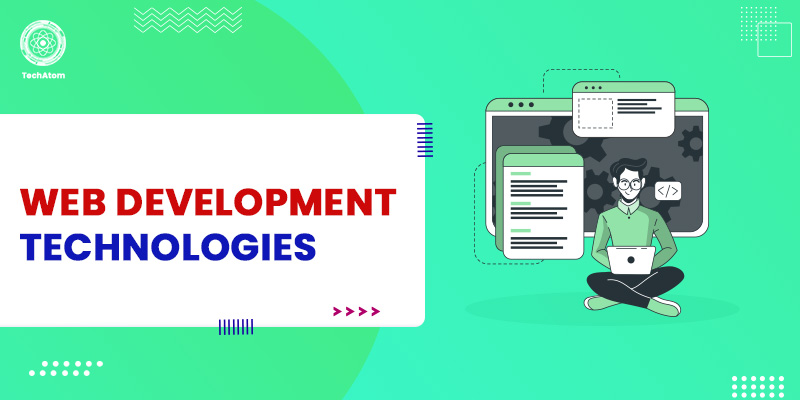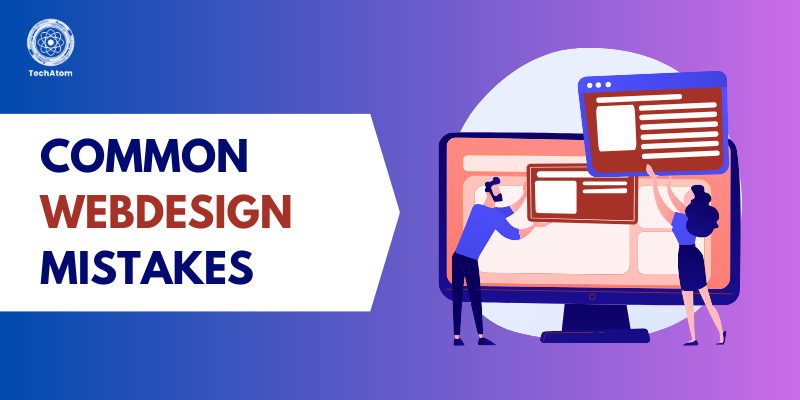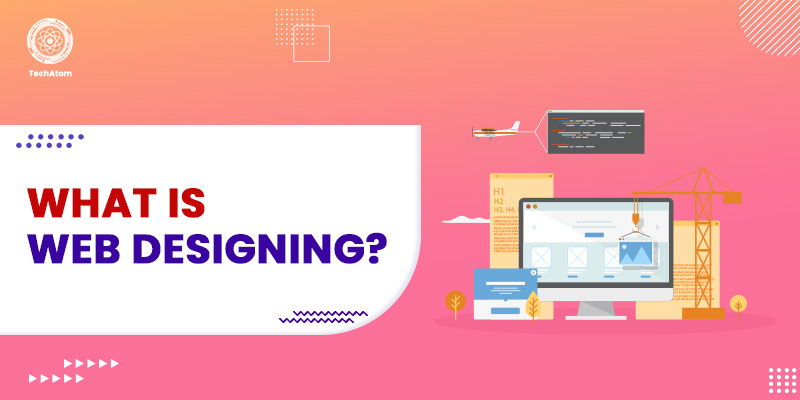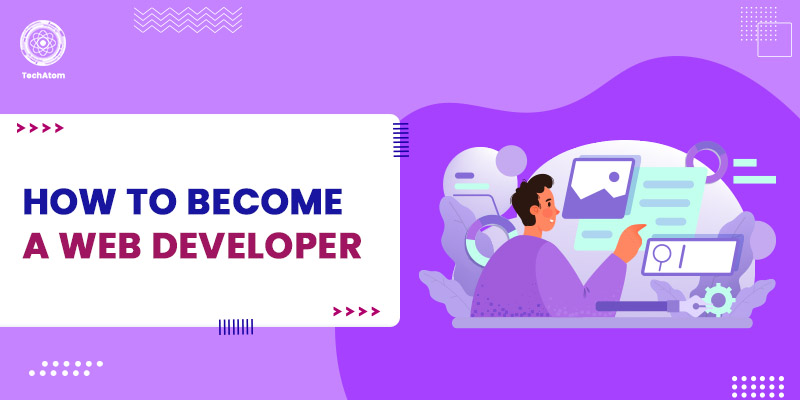Web development is an essential part of business growth. Every business aspires to gain more customers, and with the help of websites, it is possible. A website is a medium for a brand to connect to more audiences worldwide. It showcases all the information and data associated with your brand to the people.
Further, web development is constantly evolving. So the results we obtain from it are also changing.
Therefore, it is crucial for an organization to opt for the latest web development trends and flourish their digital business platforms.
In this post, let’s understand the whole concept of web development and web development technologies in detail!
Let’s begin!
What is Web Development?
Web development simply means building, creating, and maintaining websites. It includes various steps such as web designing, programming, database management, etc. Following such aspects, a developer can curate a fully-functional website for a business. Developers use various programming languages to create websites, such as HTML, CSS, JavaScript, Python, etc.
Moreover, WordPress is also one of the most popular CMS chosen by developers worldwide.
According to statistics, WordPress accounts for 42.2% of all websites globally.
A great website design is very important for the growth of a business, as approximately 48% of people say that a good website design helps to decide the credibility of a business. Moreover, according to Social Media Today, 94% of people say that a bad design is the biggest reason they don’t trust some websites.
The statistics clearly indicate how important web development is for gaining more customers.
There are three types of web development:
- Frontend development: in this category, the developers are responsible for building that part of a website that is visible to the customers, such as design, text, images, etc., with the help of multiple programming languages such as JavaScript, Python, CSS, HTML, etc.
- Backend development: backend developers manage a website's database, i.e., the part of the website that is not visible to the viewers.
- Full-stack development: these developers work in both front-end and back-end development.
Web Development Technologies That You Should Know
Web development technologies are multiple programming languages and tools to develop fully optimized websites and apps.
Technologies keep on evolving with updated features. A business must stay at par with these advancements and incorporate the same in their businesses. The latest web development technologies help boost your brand’s growth manifold. If you plan to enter web development, these are some of the top technologies to learn. We have categorized them below:
- Programming languages: JavaScript, PHP, HTML, CSS
- Web development frameworks: Front-end frameworks and back-end frameworks
- Databases: SQL, NoSQL
- Libraries: Vue.js, React.js, FacebookSDK
1. Programming languages
Without prior knowledge of programming languages, it is impossible to be a part of basic web technologies. Every developer must have expertise in the topmost programming language used in web development, such as JavaScript, Python, HTML, CSS, etc.
These languages are a way to instruct machines about what action to take.
JavaScript
One of the most used languages by developers is JavaScript. It is used by both front-end and back-end developers. Moreover, it is simple to use and understand.
This language makes it easy to create applications and websites.
PHP
PHP is another common language used in web development. A very famous CMS, WordPress, is also built on it. Moreover, there are various tutorials provided by PHP for support and troubleshooting.
HTML
The full form of HTML is Hypertext Markup Language. It is one of the most basic and fundamental languages. HTML5 is the latest version of HTML.
Further, a browser cannot show text, images, or other elements without HTML.
CSS
Cascading Style Sheets, or CSS, help stores improve the appearance of web pages. HTML is the skeleton of a webpage and provides the basic structure, whereas CSS beautifies it.
Further, this language helps to improvise layouts, add colors, stylish fonts with element positioning, and much more.
2. Web development frameworks
These frameworks are libraries and tools that developers use while building a website. They help to develop a website by not building software functions from the beginning. Hence, these frameworks provide the necessary tools to a developer. In addition, front-end and back-end frameworks help in the development process.
Front end frameworks
Angular
Angular is a well-known front-end framework operated by Google. It is opted by many developers because of its deep functionality and robustness. There are ample functionalities in this framework that helps to develop a website easily.
React
It is an open-source, front-end JavaScript library to create user interfaces. It works based on the MVVM (Model-View-ViewModel) pattern.
React is best suited for front-end websites, whereas React Native is for mobile apps.
Flutter
This is, again, an open-source mobile user interface framework used to develop applications. You can integrate it with other programming languages, such as CSS, JavaScript, and HTML.
It can also be used for developing web applications but is best suited for mobile apps.
Backend framework
Node.js
It helps developers to write server-side code with JavaScript. Many developers use Node.js as it helps to develop applications quickly and efficiently.
ASP.NET core
It is a cross-platform open-source web framework. Developers use it to build web applications and services, mobile backends, and IoT applications. The ASP.NET core community is growing at a good pace. Some top companies are working with it, such as Alibaba, Slack, etc.
Django
It is a beginner-friendly web framework to secure and maintain websites. It can be used for both front-end and back-end. In addition, you can use it for websites, content management, social networking, and even chat apps.
Interestingly, YouTube, Spotify, and Instagram are built using Django.
3. Databases
The place where all the data is stored is known as a database. It requires deep knowledge and expertise to store or retrieve data. These databases are present in the form of tables. Moreover, they are handled by backend developers. There are two main types of databases: SQL and NoSQL
SQL
SQL, or Structured Query Language, is a widely used language by backend developers. It is used to define, store, and retrieve data when required.
NoSQL
NoSQL databases do not use structured query language and have other ways to store data. It does not require defining the structure first.
Popular examples of databases are:
- MySQL: open-source SQL database
- MongoDB: open-source NoSQL database
- Oracle: proprietary database management system
4. Libraries
The collection of various files, programs, scripts, etc., is known as libraries. These libraries help to group code segments together to enable functionality. In addition, there are various scripts or functions that you can directly fetch from these libraries and integrate into your code to design your website. So developers do not have to code from scratch!
Some examples of libraries are:
Vue.js
It is extremely simple and easy to use for developers. Vue.js is a JavaScript framework that aims at providing excellent UI.
React.js
It is a popularly used front-end library. However, it has a complex learning curve. Nonetheless, it helps to create excellent user interfaces.
FacebookSDK
This library helps to attain users' data as it integrates applications with Facebook. This data helps get users' insights, understand the metrics analytics, and later implement it in your business strategy to make necessary improvements.
Web Development Technologies That Will Transform the Future
Web 3
You must have heard about Blockchain technology. Web 3 is also associated with it. It is the latest version of the web that runs decentralized applications on the blockchain. Initially, this term was coined by Ethereum co-founder Gavin Wood. His vision was to create a Web that could be completely trusted.
Do you know the global web 3 blockchain market revenue is expected to reach $23.3 billion by the year 2028?
Web 3 uses cryptocurrencies, NFTs, and Blockchain to provide control to the users in the form of ownership.
The IT architecture of Web 3.0 is as below:
- Interaction: hardware and software that a user interacts with.
- Computation: ways a user and the software/hardware interact with each other.
- Information: data for secure computer systems.
Core Principles of Web3
- It is decentralized: The ownership is not in the hands of the internet controlled and owned by entities but amongst the users and builders.
- It is trustless: it doesn’t rely on trusted third parties but operates by using economic mechanisms.
- It is permissionless: everyone gets equal access to be a part of Web3.
Important facts of Web3
- The global web 3 Blockchain market is divided into four categories: public, private, consortium, and hybrid.
- Web 3 term is searched 1,95,000 times every month on Google.
- In 2014, Gavin Wood, co-founder of Ethereum and founder of Polkadot, described the term Web3 as a decentralized online blockchain ecosystem.
Advanced AI
Artificial intelligence is one of the most advanced web development technologies. It has become very popular. In addition, you can see objects like Alexa and Siri in your daily life. These are perfect examples of artificial intelligence.
This automation is making the lives of humans much easier than before. Here is a list of AI-powered things we have in our daily lives:
- And algorithms recommend movies or series according to your taste.
- Correction of grammar and pronunciation in various languages.
- Translating one language into another.
Artificial intelligence has a lot of potential in the future, here are some examples to prove it:
- Predicting outbreaks: in 2016, BlueDot detected the outbreak of the Zika virus in America and even the origin of COVID-19 a few days before the WHO announced the virus.
- Drug discovery: various pharmaceutical companies are using AI in vaccine development.
- Protein sequencing: AlphaFold is a model that can predict the protein structure from its amino acid sequence. This is considered one of the biggest scientific breakthroughs achieved with the help of AI.
- Building images from texts: some deep learning-based technologies are used to build human-sounding texts and later converted into images.
Important facts about advanced AI
- AI has the potential to deliver 16% global GDP growth by the year 2030.
- Soon, traditional journalism will be replaced by robot journalism.
- AI is capable enough to detect the emotion of a person.
Automated code reviews
There is very little space left for manual work in this digital world. Developers are switching to automated code reviews to stay on par with advanced technologies.
Automated code review reviews source codes with predefined parameters to discard errors or bugs. The solutions are combined with Git-based repository hosting services. This helps to analyze the code properly and check if it fulfills the predefined requirements.
Slowly, this web development technology is being incorporated into various businesses. It saves time and energy for the developers in code reviews.
The top automated code review tools to scale up websites and apps are Codacy, CodeScene, Codebrag, and CodeScene.
Important facts of automated code review
- Scalability is easy with the help of automated code reviews.
- These tools are easily accessible; you just have to set them up with code hosting providers such as GitHub.
- The tools help in code coverage.
- Tools are cost-effective and provide a better ROI.
Motion UI
Motion UI is one of the latest development technologies that can make your business stand out.
It is a SAAS framework that creates transitions and improves the UI. Motion UI is ZURB’s library (ZURB Studios). It provides animations and dynamic transitions for the website.
Motion UI has the potential to attract visitors and keep them on your website.
Gone are the days of static designs, it is now the time for motion design.
The transition effects, such as slide, scale, and fade, can be created along with some built-in animations.
You can use motion UI in websites and applications in the following mentioned ways:
- Welcome users
- Add interesting elements
- Refresh the content
- Feedback
Advanced IoT
IoT, or the Internet of Things, is ruling nowadays and is here to evolve more in the future.
All digital gadgets regularly used at home are examples of the Internet of Things, such as sensors, cameras, and even signaling devices. Further, it is one of the most widely used web technologies by developers.
It is highly scalable, stable, and secure.
Important facts on IoT
- There are approximately 13.8 billion IoT devices in the world.
- It is one of the fastest-growing sectors in technology.
- The manufacturing of IoT is expected to grow approximately to 53.8 billion in 2025.
All these latest and new web development technologies are here to stay! If you plan to enter this field, make sure you get your hands on these and gain expertise! Besides, IT industry inclines more towards individuals who have knowledge of these innovations.
Conclusion
As you can see, web development technologies are essential for the growth of a business. Some traditional technologies, such as programming languages, frameworks, and libraries, are the backbone of web development. However, the future trends of web development technology are Web3, Advanced AI, IoT, etc.
These technologies will help to transform the world of web development in the future. They offer the latest advancements and security and fulfill the changing demands of the technology sector and human lives.
I hope this article helps you understand the topic better and widens your knowledge base.
Adios!
People are also reading:
- How to Become a DevOps Engineer?
- Growth Hacking Strategies
- Best Tech Stack
- Common Mobile App Design Mistakes
- Native vs Hybrid Apps
- Best Startup Ideas
- Software Testing Strategies
- Best Productivity Apps
- Agile Project Management Tools
- Cheat Codes for Designing User Interfaces
Frequently Asked Questions
1. What are the three core technologies of the web?
The 3 core web technologies can be termed programming languages, frameworks, and databases. However, other technologies exist, such as web servers, browsers, protocols, data formats, and more.
2. What are the types of web development?
The three main types of web development are front-end, back-end, and full-stack development.
3. Which is the best language for web development?
Many top languages are used in web development, such as JavaScript, HTML, CSS, Python, and more.
4. Is web development a good career?
Web development is an excellent career and offers lucrative packages in reputed organizations.
5. How do I become a web developer?
To become a web developer, gaining expertise in some top programming languages, such as Python, JavaScript, HTML, and CSS, is important.




